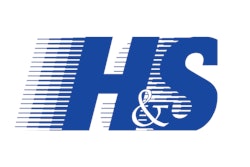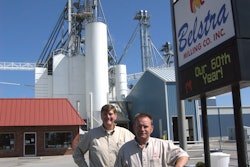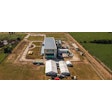The poultry industry has seen its share of better days. The price for breast meat has plummeted thanks to a gluttonous supply, and although the price of grain has decreased in recent months, it’s still well above average over the previous 30 years. These factors have forced Tyson Foods and other poultry producers across the nation to cut production and close processing plants’ doors for good. These conditions also contributed to the bankruptcy filing of the nation’s largest chicken producer, Pilgrim’s Pride.
Of course, many producers have escaped this fate, but not without making capital investments in their future. In today’s market, staying competitive requires companies to identify areas of vulnerability and address them early on with a well thought out long-term plan. An outstanding example of such a company is Virginia Poultry Growers Cooperative, headquartered in Hinton, VA, the nation’s sixth largest turkey company, which raises and debones approximately 7 million 40-pound toms a year and markets their products to further processors.
From the time it opened, the co-op had purchased grain for their feed mill from a nearby Pilgrim’s Pride facility. But in order to gain control of their feed costs, co-op managers needed to find a way to contract their own corn.
In April 2008, the co-op completed building a grain unloading facility 10 miles away from their feed mill in Broadway, VA, enabling them to cease purchasing corn from Pilgrim’s Pride. Under the direction of Phil Miller, engineering manager of VPGC, the $10 million project was completed in about a year and a half, and the co-op is now more in control of its future than ever.
Overcoming adversity
VPGC is no stranger to accomplishing what its members put their minds to. Prompted by Pilgrim’s Pride’s announcement that it would be closing its Hinton, VA turkey processing plant in September 2004, establishing the co-op took a mere six months thanks to the relentless dedication of its 154 members. Most of the co-op’s members had contracts with Pilgrim’s Pride and knew they needed to get the operation on its feet quickly, or risk being out of business.
Co-op leaders managed to rally the support of local growers, secure financing and devise a working business plan by July of 2004, and then purchased both Pilgrim’s Pride’s processing plant and their Broadway, VA feed mill. After accomplishing what some may think of as impossible in such a short span of time, the next hurdle the co-op needed to clear was to find a way to contract their own corn.
“Our senior management knew we needed to do something because we weren’t able to take care of ourselves. Getting our corn from another facility put us in a vulnerable position,” explains Miller.
VPGC’s feed mill, built directly after World War II, is rail accessible, but has only enough storage for approximately 14 railcars. The problem there is that railroad company Norfolk Southern’s freight rate per car is higher for individual cars than for a unit train. In some cases a unit train is up to 100 cars, but in the rural mountainside of Shenandoah Valley, a unit-train is 75 cars.
Jim Mason, president and general manager of VPGC, says that Norfolk Southern’s freight rate is responsible for the existence of many East Coast grain unloading facilities. “In the last five years Norfolk Southern has forced grain unloading stations, such as ours, to go up all over from Alabama to Pennsylvania because most businesses can’t afford to freight unless they can unload a unit train,” says Mason.
Time is also of the essence. Freighters are charged a hefty demerger fee if railcars are not completely emptied and ready to head back to the Midwest within 24 hours.
The only way to get out of their situation was to build a state-of-the-art grain unloading facility.
Planning makes perfect
Faced with the fact that their feed mill is landlocked, they began scouting land for the unloading facility in the mill’s surrounding area of Rockingham County. Co-op members settled upon a location in Linville, VA, about 10 miles south of their feed mill. Once the location had been determined, VPGC worked with Norfolk Southern and local firm Blackwell Engineering to lay two miles of track.
Next, Mason sought out the expertise of Sunfield Engineering Inc. to complete the process and structural engineering for the project. Dick Kobetz, president of Sunfield Engineering, Inc., was initially contacted in the summer of 2005 and drafted roughly half a dozen conceptual plans before the board firmly decided what the new facility would look like and what structures it would use to achieve their goals.
Kobetz commended Mason and other decision makers for taking their time analyzing every aspect before finalizing any plans. They focused on choosing structures and equipment that would save the co-op money in the longrun, rather than saving on capital costs in the shortrun.
“Good planning not only keeps cost down but adds value to each dollar you spend,” explains Kobetz. “There’s nothing that some company can’t build cheaper and those people who purchase on price only are fair prey. In order to get the best value, we look at things not just on a first cost basis, but on a life cycle cost basis.”
Storage and handling
One of the most important building decisions centered on the silos. Kobetz presented VPGC with different layouts in one-, two-, three- and four-bin configurations. They also had to choose between steel bins or concrete slip-form bins. The co-op chose to build two concrete silos although it cost slightly more to build than steel bins. Life cycle and maintenance costs were factors in making their decision.
“We could’ve gone cheaper and used those lower, wide-diameter corrugated steel bins, but the downside is that they take a lot more equipment to load, distribute and reclaim,” says Kobetz. “With all that equipment you not only have capital costs but maintenance costs. Phil conducted a detailed analysis and decided the concrete bins would give them a better value. over the life of the equipment.”
Each concrete silo, constructed by Bismark, ND company, J-Sons Inc., stands148 feet tall, 60 feet in diameter and can hold 300,000 bushels each, for a combined capacity of 600,000 bushels. For their conveyors, bucket elevators and legs, the company chose equipment from Hayes & Stolz and The Esmueller Company.
The facility cut costs by using only as much equipment as is needed to get the job done. VPGC has only two receiving conveyors, one shipping conveyor and two bucket elevators. The bins unload almost completely by gravity and there are no tunnels underneath them. They also use an Airlanco AirAuger system to empty the portion of the tanks that does not flow out by gravity. The system utilizes high-pressure fans to blow the heel of the grain out of each silo.
Speedy delivery
Storage plays a huge role in the operation of the facility, but the key to VPGC’s success lies in their ability to quickly unload and load out. The unloading facility is equipped with two 17,500-bushel/hour elevators. The co-op considered installing one 35,000-bushel/hour elevator, but decided to install dual elevators instead.
This was a wise planning decision, according Kobetz. “They could’ve gone with a single 35,000-bushel/hour leg, but one downside of that is if it malfunctions they’re out of business. This involved some initial extra capital costs, but the insurance value is being able to operate at half speed if there’s ever a problem with a bucket elevator,” says Kobetz.
With both elevators running, a combined speed of 35,000 bushels/hour, VPGC’s small staff can unload an entire unit train, or 300,000 bushels, in around 18 hours.
And unloading the cars is only the beginning. VPGC runs one elevator to load out 17,500 bushels/hour from the silos to the railcar. Each day VPGC loads out about six cars and shuttles the grain 10 miles to the mill where they’re unloaded again and then brought back that evening.
Using what you’ve got
VPGC did an excellent job of using the resources they already had in order to keep costs down. The facility is situated near a rock quarry, enabling them to inexpensively source stone for the railroad tracks and also cut down the amount of foundation necessary.
The silos sit upon a deep layer of solid limestone. “We drilled down 80 feet, looking for caverns, but it was all solid.” says Miller.
“The rock in that area is so hard that we could’ve founded the silos directly on bedrock, had there been a way to properly smooth out the surface. Of course, we did have to grade the rock and then pour some foundation, but the rock provided a perfect surface for the silo foundation. These conditions allowed us to build high rather than wide, which was helpful in this fairly narrow site,” explains Kobetz.
Future Growth
Although 2008 proved to be a rough year for poultry producers, VPGC is standing on solid ground. Mason remains hopeful for the future of the company. “We’ve had to cut production a bit because of the price of commodities, but the market will correct itself and whenever it does, we’ll still be here,” he says.
With that in mind, VPGC board members decided to purchase enough land to build a new feed mill on the same site that their unloading facility sits on. “We did that so we could build a full-scale feed mill if we ever wanted to walk away from our current mill, or if production went up high enough that we didn’t have the capacity in our current feed mill,” says Miller.
However, they do have plans for growth in the more immediate future. VPGC is in the process of working out deals with other local producers to begin selling their corn. Miller is anxious for this arrangement to begin. “It would not only mean more corn coming through the facility, but it would also help us pay for the facility so we’d have a faster return on investment,” says Miller.
VPGC is equipped to meet any customer’s transportation needs. They can load out onto a truck using a dynatek/manierre bulk loading system if they had a customer who wanted to purchase corn by truck.
VPGC has already made a name for itself in four short years. If past behavior is any indication of their future, VPGC will overcome whatever obstacles come their way.















